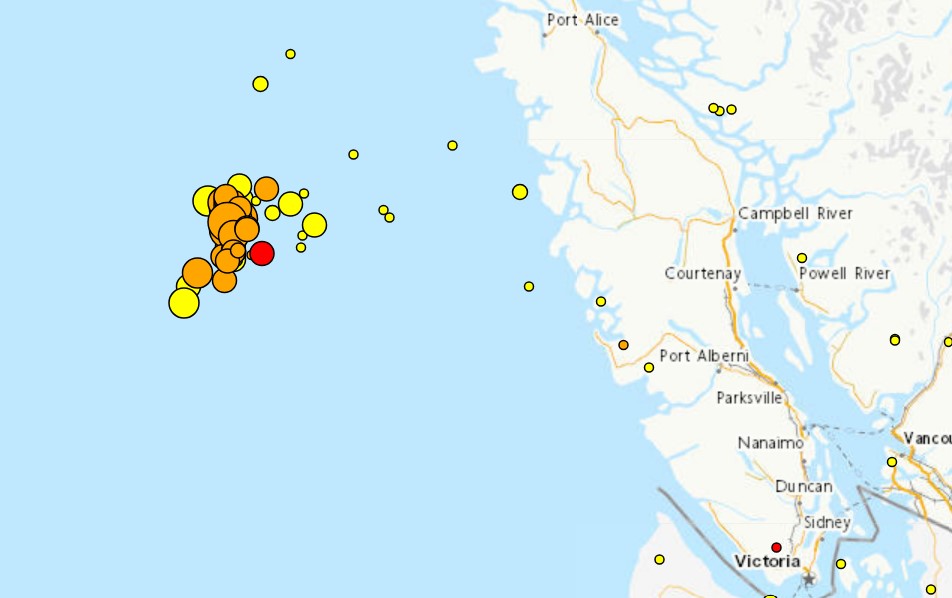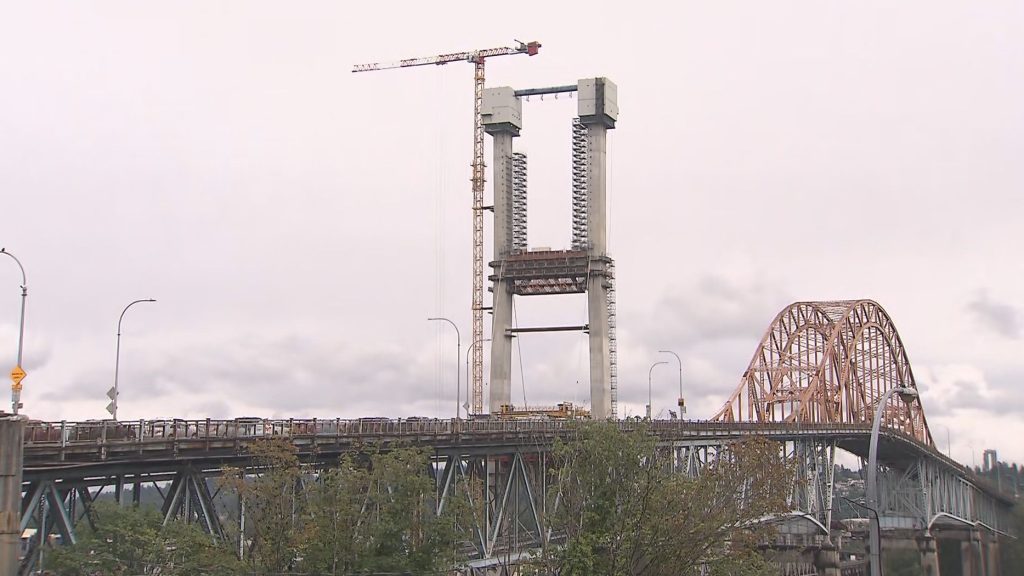Magnitude 6.1 earthquake shakes west of Tofino as ‘swarm’ of quakes continues

Posted July 11, 2024 8:39 am.
Last Updated July 11, 2024 5:24 pm.
Earthquakes Canada says a magnitude 6.1 earthquake has been recorded off the west coast of Vancouver Island Thursday morning.
The national earthquake agency says the quake, which was recorded at 8:08 a.m., is part of an ongoing “swarm of earthquakes offshore Vancouver Island, at the intersection of the northern Juan de Fuca Ridge, Sovanco Fracture Zone, and Nootka Fault Zone.”
Emergency Info BC says there is no tsunami threat to B.C. due to the quake.
Speaking to CityNews Thursday morning, John Cassidy, an earthquake seismologist at Natural Resources Canada, said there have only been a few felt reports due to the quake.
“This earthquake, although it’s a large earthquake, is still far enough away that it hasn’t wasn’t felt by most people on the island and the closest communities,” he explained.
The US Geological Survey initially recorded the quake, about 220 kilometres west of Tofino, as being magnitude 6.6, and Cassidy explains that the magnitude recorded may change over time as “more data comes in and more analysis” is done.
Cassidy says earthquakes over magnitude 6 “do occur” in our region, with 11 being recorded over the last 25 years.
“A few earthquakes like this [happen] every decade. They’re not unheard of. But they don’t happen every year. So, they are relatively rare events,” he explained.
“And these are really large earthquakes. So a 6.1 close to a city would be very strong shaking, and some damage would be expected.
“Certainly you’d see broken windows, broken chimneys, you’d see items coming off of shelves. Very frightening shaking if you’re close to that sort of an earthquake.”
Cassidy says due to the earthquake’s distance away from populated areas, it “lost its punch.”
“We’ve seen hundreds and hundreds of magnitude 5 and 6 in this area over the decades. So, it’s a region of very active plate tectonics,” he explained.
Thursday’s earthquake comes after the region saw about 10 earthquakes since the beginning of July, according to Earthquakes Canada.
Cassidy said the region sees “swarms” of earthquakes every few years or so, but generally, they consist of much smaller quakes.
“These are not uncommon, that you just have a burst of seismic activity that may last for a few days, or it may last for a couple of weeks. And, that’s typically what we see off of our coasts, the swarms of much smaller earthquakes will continue and then die off suddenly, after a week or so,” he explained.
“This particular swarm that we’ve seen since July, the third has been a series of magnitude 4 and 5 earthquakes. And today’s of course, is the largest in that sequence, it’s in the same general area. So we expect it would be a part of that swarm.”
In September 2001, Cassidy explained, the same region saw a very similar swarm of earthquakes that lasted for nearly two weeks.
“That particular swarm finished off with a couple of magnitude 6 earthquakes. And then it just stopped, that was the end of it. And there were no more earthquakes. So this particular sequence that we’ve seen over the past week, is interesting. But again, we’ve seen this before when we go back 20, 25 years.”
Cassidy said swarms like the one the region is currently experiencing are nothing to be concerned about. But, it is a reminder that we live in a “very active earthquake zone.”
“This is a region where ocean plates are being formed. So you have magma coming up from deep beneath the ocean to the surface, forming new ocean plates, tectonic plates, that are then being pushed towards North America,” he explained.
Carmen Ewles, the general manager of First Aid and Survival Technologies (F.A.ST.) Limited, says that while British Columbians in general appear to be aware of the possibility of natural disasters — including quakes, fires, and flooding — not everyone is prepared.
“It’s always a good reminder to check your grab-and-go kit to make sure everything is together in one place, in case you need to evacuate or also do shelter in place” Ewell told CityNews.
“I think that’s something that we have to do on an annual basis.”
Particularly important, she said, is for people to understand that they should not count on outside help should disaster strike, and they should be prepared to be on their own for up to seven days.
“The more prepared people are to take care of themselves, the less they have to worry about the government helping or assistance, and actually, the less stressful it will be if indeed they need to evacuate or react in any way to a natural disaster,” she said.
“For example, it’s really important that you plan with your family how you’re going to communicate if you’re not all in the same place when something happens, how are you going to communicate if there are no cell service or internet? I think we rely a lot on our phones and being able to text and email or make or post on social media. So, number one would be [make] a plan.”
Ewles emphasizes that emergency kits should be built around the three most important things: water, light, and heat.
“So first thing, if the power is out, or if it’s winter time, do you have flashlights, emergency light sticks, other ways, maybe even generators, for power outages,” she said.
She also warns against relying on social media or other sources of misinformation in the case of an emergency.
“Have an old-fashioned AM/FM radio,” she said.
“It’s very, very important to only trust information from credible sources.”
You can watch CityNews 24/7 live or listen live to CityNews 1130 to keep up to date with this story. You can also subscribe to breaking news alerts sent directly to your inbox.
–With files from Sonia Aslam








